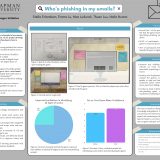Trash Bot Viviana Arroyo, Ishani Patel, Will Keegan, Anthony Walujono
May 12, 2022
Plastic pollution is a grand challenge because there is 1) an abundance of plastic used in everyday products and 2) we have nowhere to discard of plastic. This leads to many negative impacts on the soil, waterways, and living organisms in these areas.
Rationale: We noticed that there are many alternatives to cleaning up plastic from the oceans and waterways, but very little to combat the pollution on land. This is why our approach is to come up with a mechanism that can help remove the plastic pollution from land.
Solution: Build a simulated solution to represent a theoretically way to solve this problem.
In the scientific community we saw already existing solutions that were trying to tackle the plastic pollution problem. An example of this, would be nets in the ocean that collect plastic. This idea helped us inform our idea, where we could pick plastic using a robot that operates on the land helping to reduce the amount of plastic. As mentioned in our abstract, we noticed that there are many alternatives to cleaning up plastic from the oceans and waterways, but very little to combat the pollution on land.
Our grand challenge is to build a robot that is able to identify specific types of plastic, such as PLA and HDPE, and collect it over 3 different cases in a virtual simulation.
The first case will be best-case‚ where the land will have very few plastic wastes that are near each other.
The second case will be the neutral-case‚ where the land will have more plastic that is more spread out, but not too dense. The last case will be the worst-case‚ where the land will be covered in large amounts of plastic waste throughout the entire terrain. This will all be built in a virtual simulation, which we will make using Unity programming. After collection, our robot is going to take it to a recycling facility for further processing. Our robot is limited to the terrains it can roam due to the material it is built out of. The robot sensors we picked were ones that were going to differentiate whether a material was plastic, metal, or glass by analyzing the opacity and by checking the melting points. These sensors are difficult to implement in real life, not to mention they were out of the budget range that the GCI team was given. We decided not to implement it in unity, but instead shifted our idea to be a robot that picks up trash.



